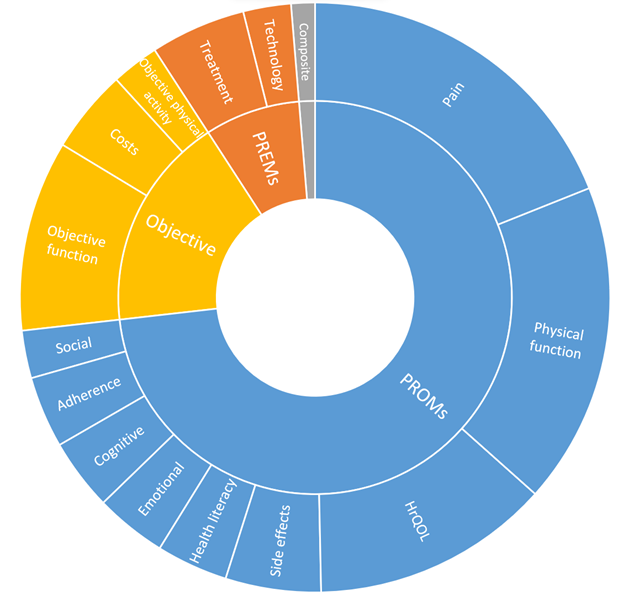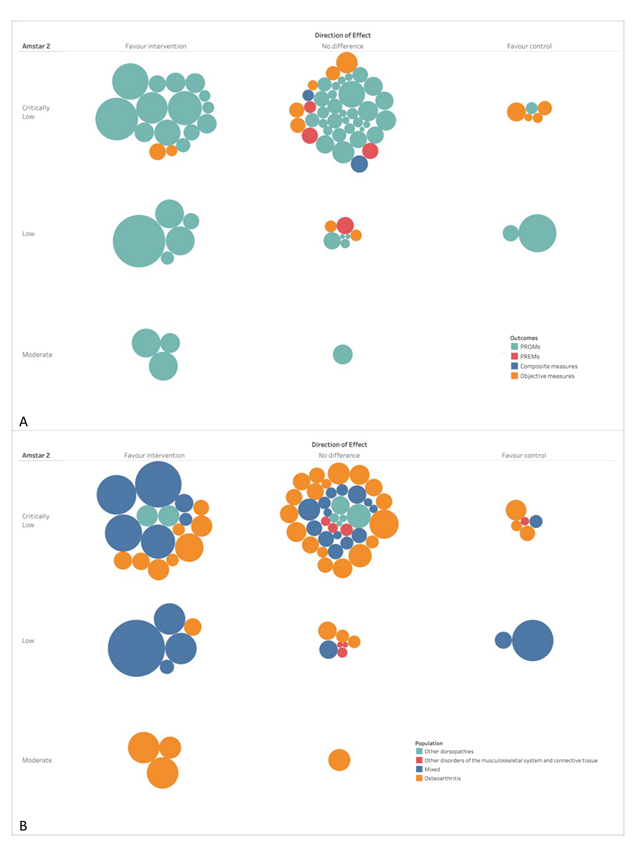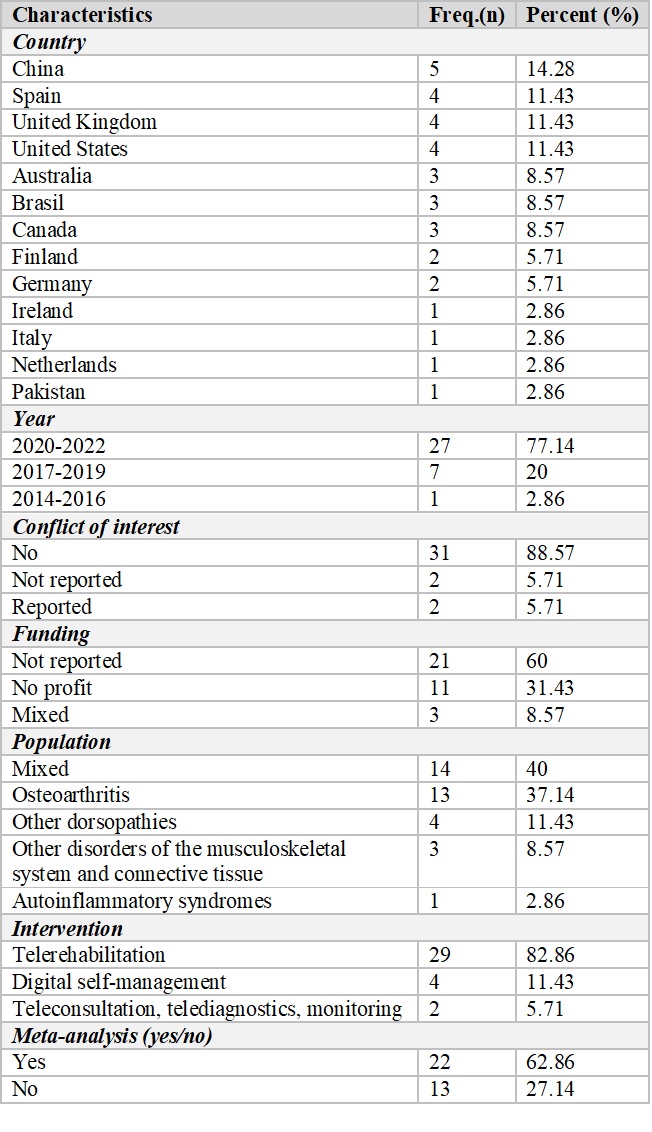L’efficacia della telemedicina nei disordini muscoloscheletrici: una revisione “ombrello”
Efficacy of telemedicine for musculoskeletal disorders: an umbrella review
Introduction
Telemedicine is a broad term encompassing many applications, such as diagnostic asynchronous evaluation, continuous monitoring using biosensors and synchronous video consultations, including multiple variations on each theme. This definition includes “Telerehabilitation”, “Health Technologies”, “Digital Medicine” and other similar keywords (1, 2). In addition, in recent years, an increasing number of studies use patient-reported outcomes measurements (PROMs) and patient-reported experience measurement (PREMs) to evaluate telemedicine services (3). Several systematic reviews (SRs) assessing the use of telemedicine for musculoskeletal conditions have been published in last years. However, the landscape of evidence on multiple clinical outcomes remaines unclear. The aim of this overview is to explore the efficacy of telemedicine and rehabilitation in the treatment of musculoskeletal conditions in terms of PROMs, PREMs and objective outcomes.
Methods
We conducted an overview of SRs (PROSPERO n:CRD42022347366) searching PubMed and EMBASE up to July 25, 2022 for SRs of randomized controlled trials assessing patients with any musculoskeletal or orthopedic condition, undergoing any kind of interventions based on advanced technology systems named as “Telemedicine”, “Telerehabilitation”, “Health Technologies” and “Digital Medicine”, delivered both in synchronous and asynchronous modalities, compared to in-person treatment or usual care/no treatment. We collected PROMs regarding pain, HRQoL, physical function, social function, emotional function, cognitive function, health literacy, side effects, adherence; PREMs, categorized into treatment and technology; and objective measures, including direct and indirect costs. We assessed the methodological quality by A Measurement Tool to Assess Reviews 2 (AMSTAR 2). Findings were reported qualitatively.
Results
Overall, 35 SRs published between 2015 and 2022 were included (Figure 1). The majority of reviews assessed “telerehabilitation” (n=29) in patients with osteoarthritis (n=13) using PROMs (n=142 outcomes mapped with 60 meta-analyses). Table 1 shows SRs’ general characteristics. Proportion of PROMs and PREMs by number of review is displayed in figure 2. Most reviews (68.6%) were rated as critically low by AMSTAR 2. A substantive body of evidence meta-analyzed found telemedicine to benefit or being equal in terms of PROMs compared to conventional care (n=57 meta-analyses). Meta-analyses showed no differences between groups in PREMs (n=4), while objectives measure (i.e. ‘physical function’) were mainly in favour of telemedicine or showing no differences (9 out of 13). Figure 3 shows directions of SRs’ effects and AMSTAR II by outcomes and by type of population. All SRs showed significant lower costs for telemedicine compared to in-person visit.
Discussion and Conclusion
To our knowledge, this is the first overview of reviews encompassing any kind of telemedicine for different musculoskeletal disorders. Telemedicine can provide more accessible tailored health care with non-inferior results in various clinical outcomes in comparison with conventional care. The assessment of telemedicine is largely represented by PROMs, reflecting how relevant is patient-centered care. Clinicians and stakeholders should consider the adoption of the best available telemedicine technologies to meet patients’ acute and chronic conditions; evidence-based exercise and education can be tailored and delivered remotely, for instance, to increase patient’s compliance to treatment. In a cost-effectiveness point of view, future studies should put efforts in investigating PREMs, objective measures and costs filling the gaps on this promising area.
REFERENCES
- Cottrell MA, Russell TG. Telehealth for musculoskeletal physiotherapy. Musculoskelet Sci Pract. 2020;48:102193.
- Russell TG. Physical rehabilitation using telemedicine. J Telemed Telecare. 2007;13(5):217-20.
- Knapp A, Harst L, Hager S, Schmitt J, Scheibe M. Use of Patient-Reported Outcome Measures and Patient-Reported Experience Measures Within Evaluation Studies of Telemedicine Applications: Systematic Review. J Med Internet Res. 2021;23(11):e30042.




